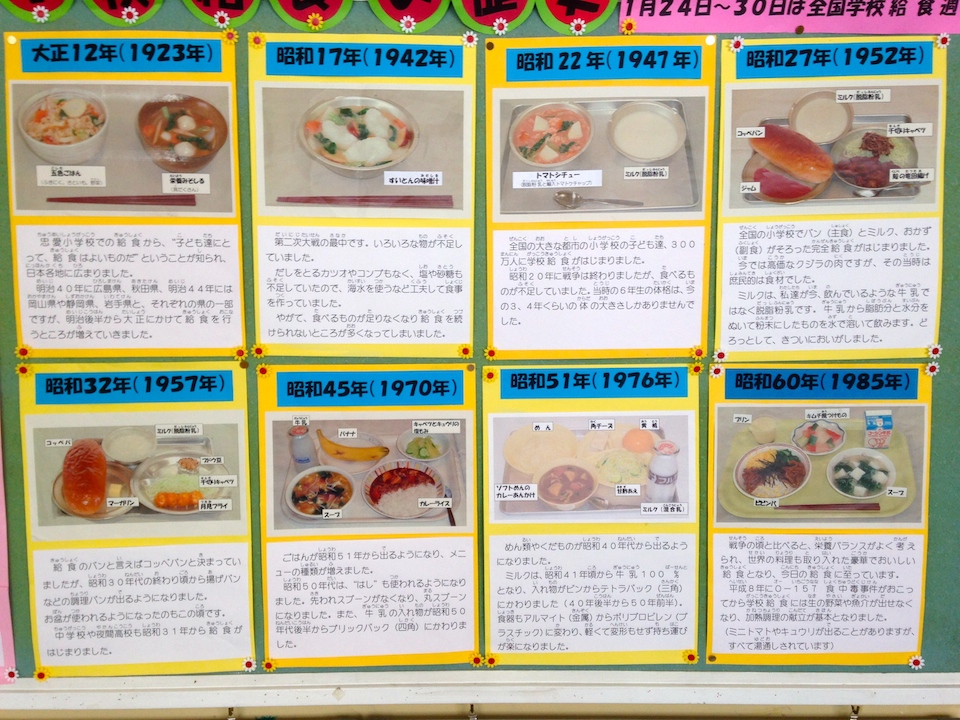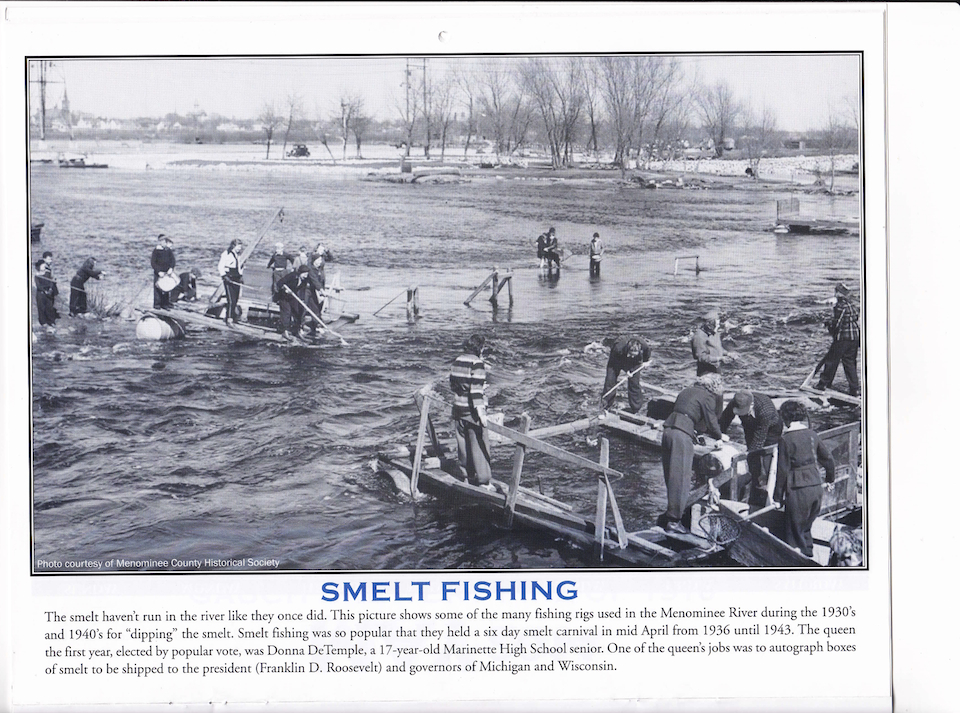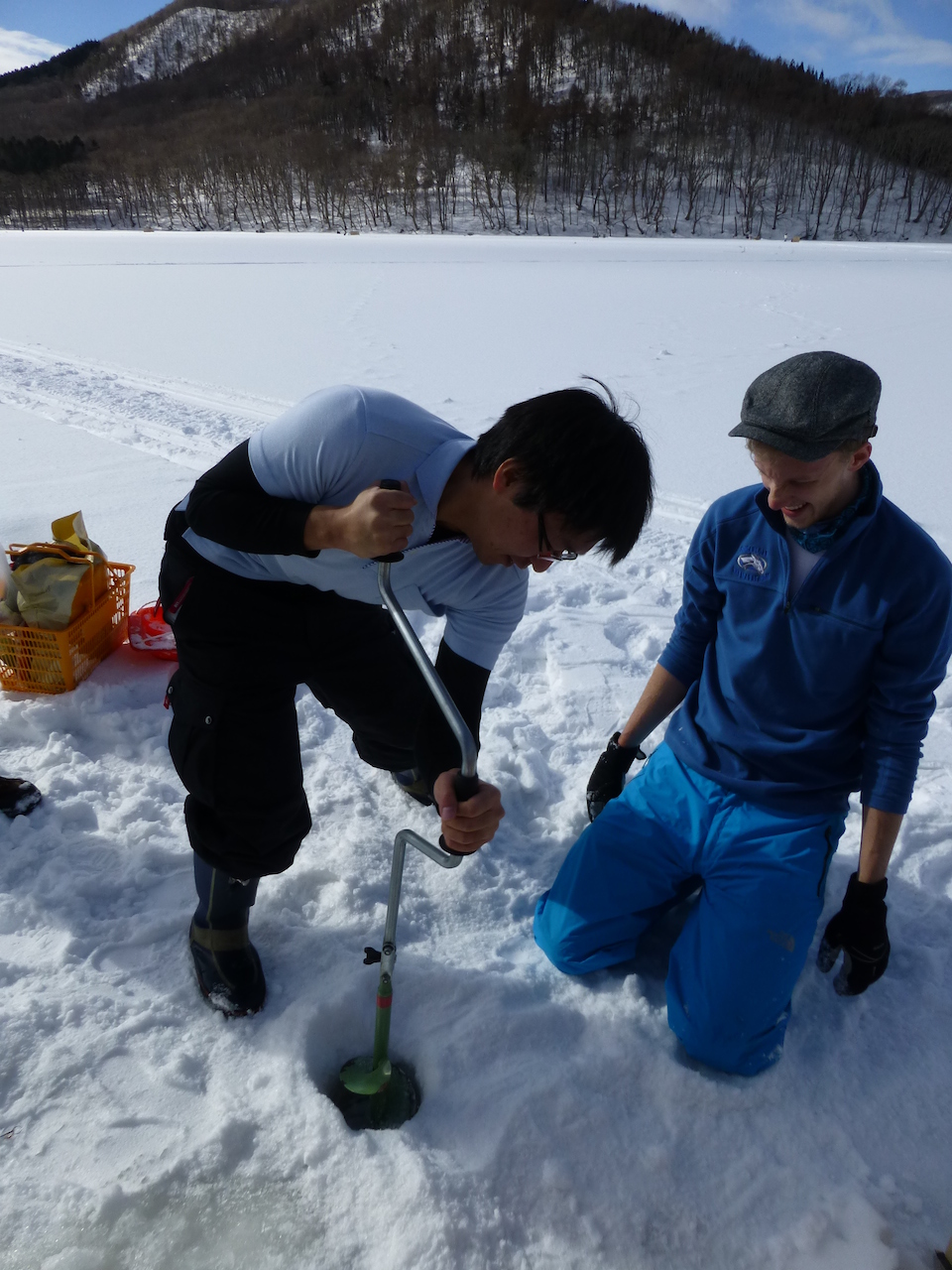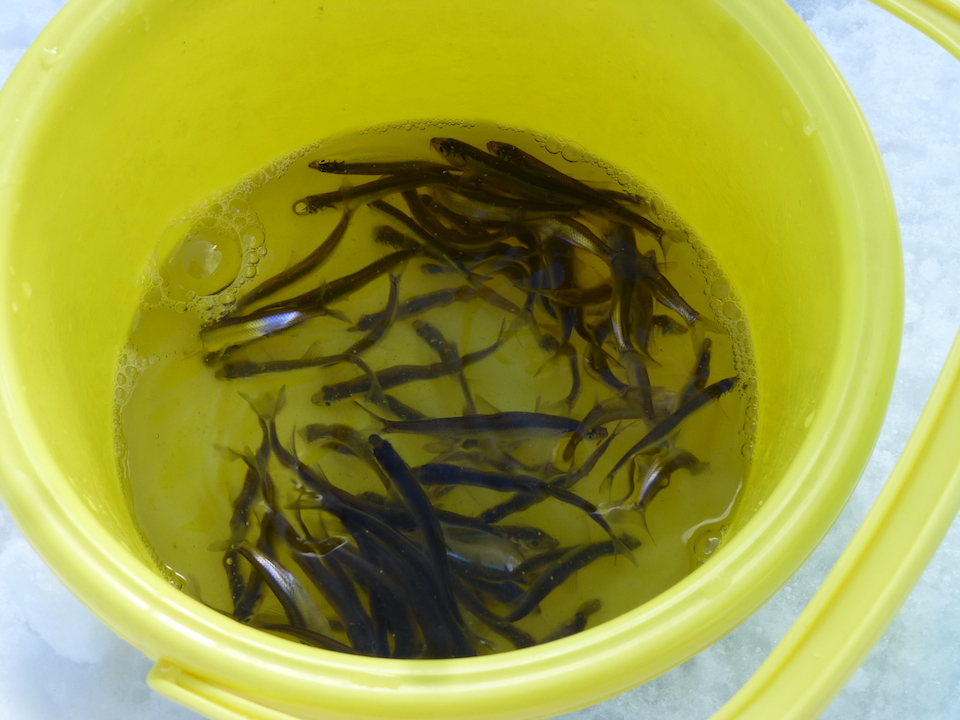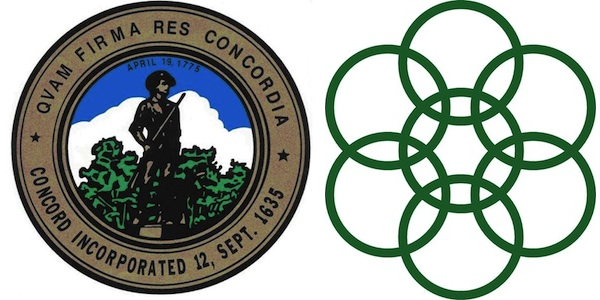This is a Bitnami WP Multisite installation. Please check the multisite configuration guide before adding content to your sites. To learn more about Bitnami stacks visit our website and to get support visit our forums. Enjoy!
Hakodate’s Goryokaku Festival and a Visit from our Friends at Sea
In May of 1854, American Commodore Matthew Perry docked in Hakodate with an imposing naval fleet and signed a treaty with the Japanese, opening Hakodate to foreign trade. With more Japanese cities following suit in the coming years, Perry’s arrival was one of several significant events eventually leading to the downfall of the 250 year Tokugawa reign, and the end of the Samurai era. 160 years later, to mark this anniversary, the American missile guided cruiser USS Shiloh pulled into Hakodate Bay, and 380 officers and sailors of the United States Navy came to town.

Goryokaku Tower is a modern cream colored pentagonal pillar topped by a two floor glass rotunda that overlooks the star shaped Goryokaku Fort. The fort was designed a year after Perry’s arrival, with the intention of protecting both Hakodate and the main island of Honshu from encroaching Russian fleets, which could have passed through the Tsugaru Strait that divides Hokkaido and Honshu en route to juicier targets like Tokyo. However, rather than defend against Russians, the fort was taken over by Japanese rebels in 1868 during the Boshin War. These rebels, samurai loyal to the Tokugawa Shogun, revolted after the young Emperor Meiji, heavily influenced by anti-samurai advisors, abolished the Tokugawa House. After a series of victories by the new and growing Imperial Army, the remaining samurai fighters established a base at Goryokaku, and, in a very progressive manner, declared Hokkaido a constitutional republic named Ezo. While Ezo’s government was based almost entirely on that of the United States, and even though Ezo held the first democratic elections in Japanese history, the United States refused to grant this infant nation diplomatic recognition. Aided by the French military, Ezo troops put up a strong fight against the invading Japanese Imperial Army the next year, but were soundly defeated, and the flag of the rising sun was raised over Goryokaku Fort on June 27, 1869, thus drawing the Boshin War to a close and ushering in the Meiji Era and rise of Imperial Japan.

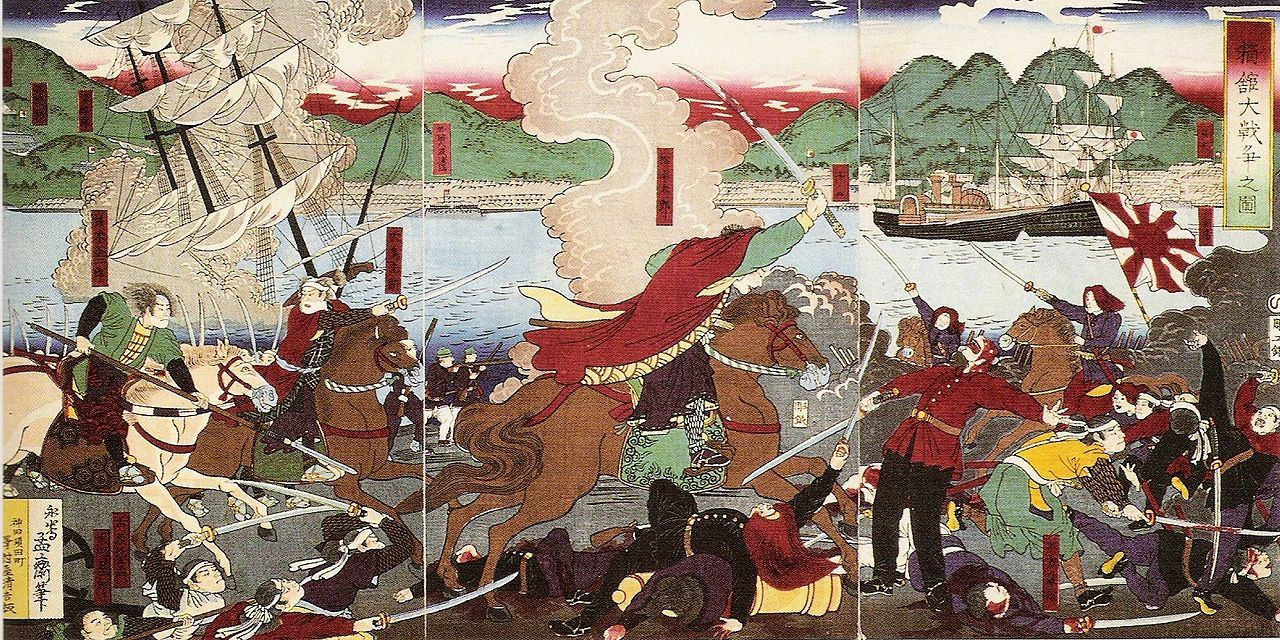

In present day, the annual Goryokakusai, or Goryokaku Festival, pays tribute to those who died in the final battle of the Boshin War. A parade featuring costumed participants representing numerous Japanese clans, foreign armies, and samurai of the period from 1854-1869 re-enact many of the events that marked these tumultuous years. This year was particularly eventful given the special anniversary of Perry’s arrival, and since almost all of the American sailor parade spots were taken by real servicemen and woman, yours truly played a British flag bearer circa-1860 leading a merry band of Japanese college students brandishing muskets and adorned in lobster red uniforms and pith helmets. Nanae CIR Ben Haydock turned heads in his portrayal of a 19th century cutlass-wielding Dutch naval officer, while other Hakodate area ALTs filled out the parade as officers and flag bearers of France, Russia, and, for one extremely lucky New Yorker who fit into the provided M size trousers, the United States. Under a late spring sun, we band of brothers and sisters marched through Goryokaku’s lively streets, while several Japanese samurai actors held walking sword fights, re-enacting the last battle of 1869. Our party came to a rest within the old walls of Goryokaku’s 19th century castle, where a ceremony recognized the historical significance of those who fought and died 145 years ago. Finally, a brass band played several tunes, western and Japanese, three ancient cannons fired off a few blank rounds, and the 2014 Goryokaku Festival came to a close.

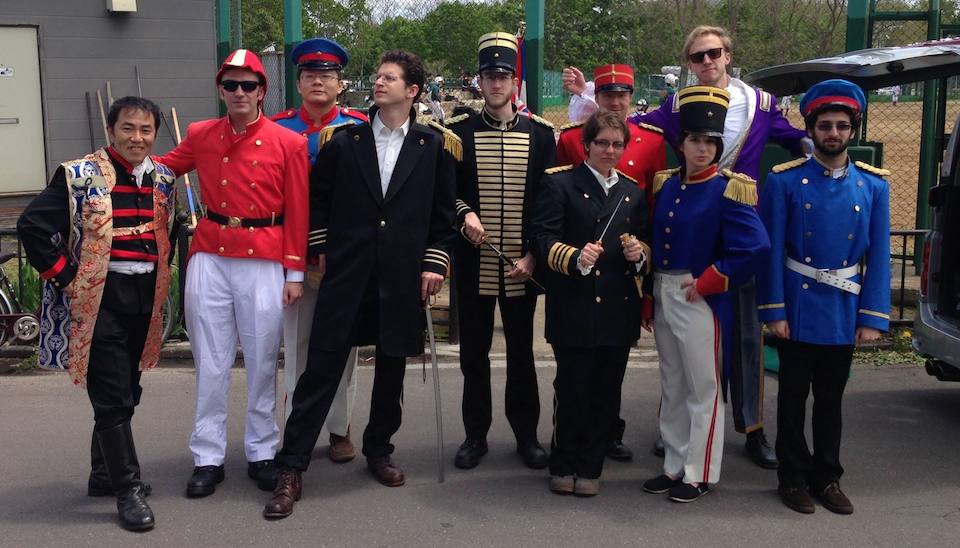
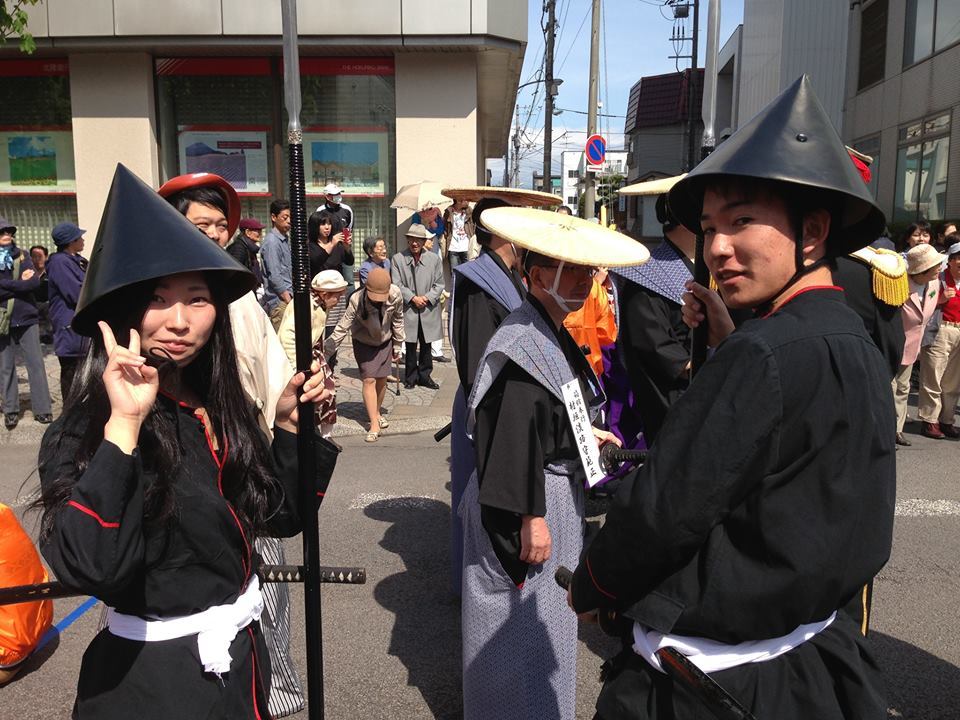


The evening before Goryokakusai, Susumo Nakano, owner of Goryokaku Tower and President of the Japan-America Society of Hakodate, hosted a banquet for many of the parade participants as well as half a dozen officers of the USS Shiloh and two representatives from the US Consulate in Sapporo. After a few drinks, we gaikokujins (foreigners) were brought up on stage to make speeches in Japanese. In awe of military figures since my failed ROTC days, I made up for my lack of formal attire with impeccable Japanese and an English “thank you” to the folks from the Shiloh for their service. Becoming acquainted with those onboard the ship allowed me the rare opportunity of touring a Ticonderoga-class missile cruiser on deployment. In its twenty-year history the Shiloh is known for having launched Tomahawk missiles against Iraq both in 1996 and in the opening salvos of the 2003 Iraqi invasion. It played a major role in relief operations after the devastating 2004 tsunami and is currently on patrol with the 7th Fleet in East Asia.

I feel truly blessed to have the opportunity to live and teach in Nanae, becoming immersed in Japanese culture and becoming a part of a very special town. My experience here since my arrival at the end of July, 2013 has been an incredible one, and I recently signed on for another year of teaching English in Nanae’s elementary and middle schools. That said, as visits from friends and family back home are few and far between, it can be easy to lose track of what it is that you are representing beyond the basic structure of a teaching assignment here. Spending time with the people who serve on board the USS Shiloh reminded me that the second purpose of my job here beyond teaching English is to best represent the cultures and traditions of Concord, and the values of the United States as a whole. Many thanks to the folks of the Shiloh, the Japan-America Society of Hakodate, and the countless parade volunteers who made this great weekend possible!

Protected: Video Exchange #6 (Nanae to CCHS)
School Lunch in Nanae
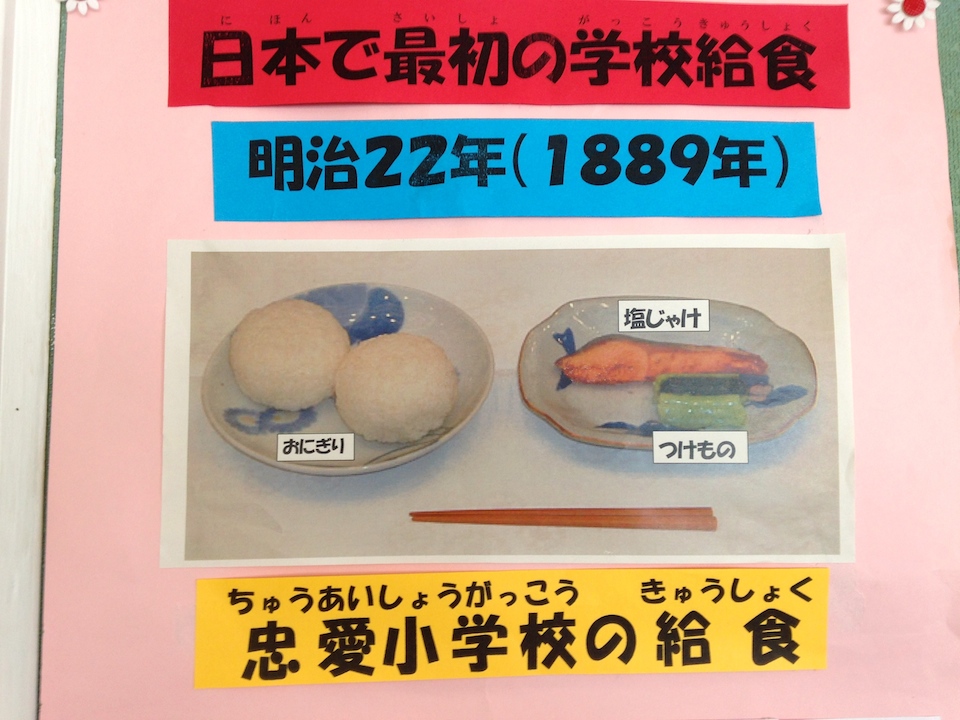
The phrase “you are what you eat” was first coined by a nutritionist named Victor Landlahr for a 1923 beef advertisement in a Bridgeport, CT newspaper. Ironically, this household saying originated at a time when American food was becoming increasingly processed, and less of an ideal basis for a healthy self image. For the better part of 22 years, my own red meat and high fructose corn syrup-heavy diet, punctuated by cravings for McDonald’s, has been far from perfect, and is a sad reflection of the poor dietary standards seen across the United States. Eating habits form early in life, and while many factors contribute to the staggering 20% obesity rate among American children, one often criticized ingredient is school lunch in America, which, high in carbs, often low in nutrition, and coupled with easy access to sugary drinks in vending machines makes for a lot of unhealthy and not so genki (lively) kids.
As Nanae’s English teacher, I enjoy the rare privilege of eating school lunch with my students every day. There are many noticeable differences between school lunch in Concord and Nanae besides the food itself, and these differences apply to greater Japan as well. For one, there are no cafeterias in Nanae’s elementary and middle schools. Students eat lunch together in their class with their teacher, and students serve the lunch. There is a rotating shift of classroom duties that students take on, from first grade through ninth, including chalkboard cleaning, trash collection, and serving kyuushoku. Every day at noon, a half dozen students in each class put on white aprons, cafeteria caps and the classic Japanese face mask to dish out the lunch to every student and teacher. After everyone’s seated, we put our hands together as if in prayer and say “Itadakimasu!” and it’s time to eat. Eating in the classroom and self service saves a ton of money. When you build a school in Japan, you can skip the cafeteria. Also, rather than each school employing kitchen staff and servers, the students do the serving and the food preparation for all of Nanae’s 8 elementary and 3 middle schools is done at a single facility.

CLICK HERE TO SEE MY 26 FAVORITE SCHOOL LUNCHES!
The Nanae kyuushoku center is a relatively small building tucked away behind Nanae Elementary, Nanae’s second biggest elementary school, located in the center of Honcho (downtown). Today I spoke with the center’s head nutritionists (with the translating aid of CIR Senpai Ben Haydock), Mmes. Matsumoto and Ichimura. Together they plan out Nanae’s kyuushoku on a monthly basis.
Unlike in Concord, kyuushoku is only served in elementary and middle schools. Nanae high schoolers are on their own, either bringing a lunch from home or buying food from a small bento (Japanese-style lunch box) store in the school. The Nanae kyuushoku center cooks lunch for 2,400 students and teachers Monday through Friday. In elementary school, parents are billed 230 Yen per lunch, about $2.25, and 270 Yen ($2.66) in the middle school. For this low price, students get a bowl of rice three times a week and a bread roll twice weekly, a carton of milk from an Onuma dairy farm, a bowl of soup, a vegetable or fruit dish, and a main protein-heavy course, usually meat or fish. The kyuushoku milk, like nearly all milk in Japan, is whole milk (3.5%). It may seem strange that a country with such lean people consumes almost only whole milk, but whole milk might be getting an unfair rap in the states. A recent study in the European Journal of Nutrition actually concluded that there is an inverse relationship between whole milk consumption and obesity amongst test subjects in Europe. Like Japan, the European diet relies on less processed food and a lower daily caloric intake than in the states, so a glass of whole milk a day might actually be good for you provided you’re not dunking twelve Oreo’s in it.

Matsumoto says that when planning the daily kyuushoku for each month, she and Ichimura look for a balance between a) what the kids like, b) what the school wants them to eat, and c) what meals might not be available at home, either because they take a long time to prepare or because the meal is foreign in origin. For school lunches with a foreign theme, Matsumoto says that they are constantly brainstorming new ideas, and draw their inspiration for foreign menus from the internet as well as Nanae’s sister city. Ichimura says that they often talk to folks at the Kyoikuinkai (board of education) about the foods eaten in Concord and Boston, and try to replicate some of the sister city’s meals. Of the Boston cuisine replicas I’ve tried in kyuushoku, clam chowder was by far the tastiest success, but for some students it remains an acquired taste. As for catering to the students’ preferences, Matsumoto and Ichimura each make daily visits to Nanae elementary and middle school, respectively, to get feedback from students. They also conduct a twice yearly student survey to gauge the most and least popular foods.

Every day, twelve staff members cook enormous batches of kyuushoku from 7:30 a.m. until late morning, when two trucks deliver the food, by now divided into different sized metal containers individually labeled to designate a class section, to each of the eight elementary and three middle schools in town. I was hoping to be able to photograph an Olympic pool sized rice cooker when I visited the kyuushoku center, but due to the sheer volume of rice needed to serve 2,400 students and teachers, Nanae contracts with a nearby bakery that cooks up enormous batches of rice. I’m a big fan of kyuushoku rice, more so than the rice I make in my own cooker, and the reason is a simple cooking tip for all you rice lovers out there. The bigger the batch of rice you make, the more evenly it will cook, so many Japanese households tend to cook large batches of rice and then freeze what’s left for future meals.

Nanae is home to a great deal of farms featuring a whole range of produce and, season permitting, local ingredients in school lunch take preference over food from elsewhere. The head of Nanae’s farming cooperative determines which farmer will be contracted on a given day to provide the lunch center with scallions, eggs, apples, onions, mushrooms, daikon (Japanese radish), or turnips on a rotating basis. Matsumoto says that the farming community in Nanae works closely with the lunch center and is very helpful in providing local foods. A great deal of the chicken, pork and beef in kyuushoku also comes from Nanae farms, and the only frozen food you’re ever going to see is the froyo.
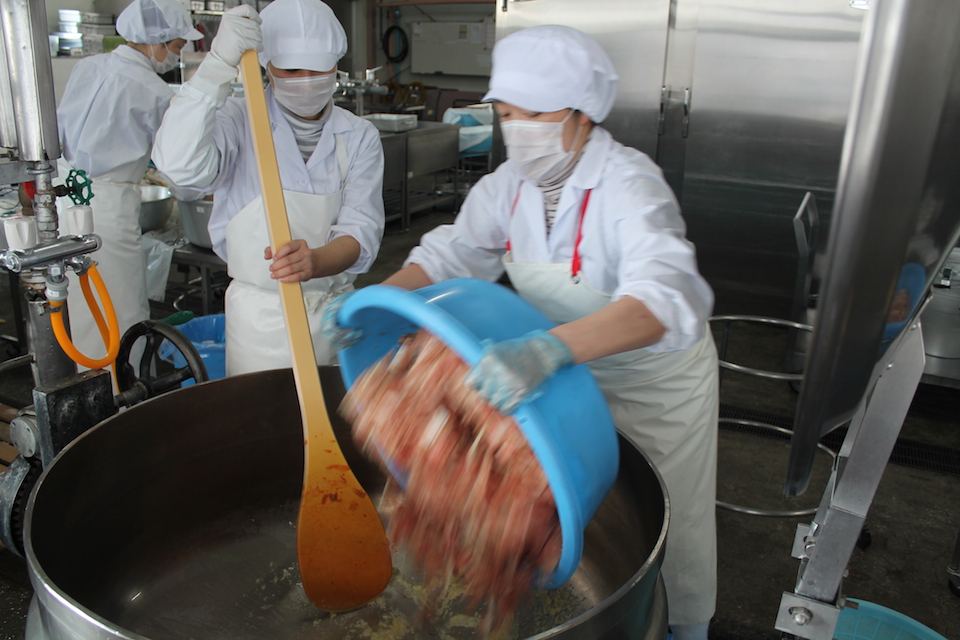
Students at Ikusagawa Elementary recently made a poster showcasing the evolution of Nanae kyuushoku over the last century. Certain dates stand out, such as 1942, during which time there was a significant food shortage. Though the school lunch in 1985 doesn’t appear much different than today, I was interested to learn how school lunch had changed since the nutritionists themselves were students. For Ichimura, as a child growing up in Nanae, the nutrition standards for school lunch were less strict, and while many more of the meals were Japanese rather than gaikoku (foreign) themed, there was a great variety amongst the basic ingredients, including the rice dishes and soups. Today, while the structural layout is less diverse; always milk, a main dish, a soup, and bread or rice, the international variety is far greater.
This past December I gave a presentation to middle school students in Nanae showing the differences between middle school life in Concord and Japan. A good portion of this presentation highlighted the contrasts between American and Japanese school lunch. My students were particularly fascinated with the concept of choosing what to eat at lunch, be it the hot lunch of the day, a PB&J or tuna salad sandwich, even a cookie or ice cream sandwich for dessert. If a student doesn’t finish their cafeteria lunch, they throw it in the garbage and can later eat a snack that they brought from home. Or in many American schools, they can just buy a candy bar from the vending machine. These options don’t exist in Japanese schools. There is one meal, and everyone eats it. If there’s a food a student doesn’t like, they’re going to learn to like it, because in Nanae learning to try new foods is a part of being a student. And if one doesn’t finish their lunch, they’ll have to wait on snacks until they get home because there are no vending machines. But I rarely see a plate with leftovers.
Matsumoto and Ichimura say they do everything possible to minimize food waste. Every day, each school’s uneaten food is collected and returned to the lunch center, where the waste is weighed before being composted. It’s been a few years since I ate American school lunch, but I don’t remember much food being recycled.

I have lived in Nanae for seven and a half months now. Each day brings a flurry of new information and cultural oddities, and the more Japanese language I pick up, the swifter this flurry becomes, and the more my understanding of Japanese customs and traditions deepens. That said, Japan is not a perfect country. There are times when I find myself frustrated by aspects of daily life here; certain things just seem to run more smoothly in America. But, I would be a fool not to recognize when the opposite is also true. School lunch in Nanae, and across Japan, from the way it is made and served, to its incorporation into education and impact on students’ health and minds is a truly unique and outstanding strength that Japan has mastered, and we in the United States would do well to follow its lead.

Ice Fishing for Nemo
Nanae’s most unique winter activity, wakasagi tsuri, or smelt fishing, takes place on the frozen lakes surrounding Mt. Komagatake in the northern village of Onuma.
With my mother’s family hailing from northern Wisconsin, I was already familiar with smelt fishing. In fact, my great aunt was the first ever Smelt Queen in 1936 in Marinette, Wisconsin, a town whose smelt popularity spawned an annual festival.

That said, I had never eaten smelt before coming to Japan, let alone Hokkaido-style wakasagi, deep-fried, bones and all, on the center of a frozen lake.
On a particularly beautiful Saturday in February, I headed out to Lake Junsainuma with CIR Ben Haydock, who will hereto be referred to as “Senpai Ben” (in Japan a senpai is an older co-worker/mentor). We were joined by some of our co-workers from the Nanae Town Office and Board of Education to partake in a friendly wakasagi tsuri competition.

I was paired off with Mase-san from the town office, who was coming out onto the ice for the first time. Mastering the right ice fishing methods and strategies takes a little time, but having fished two weeks earlier, I was ready to take on and soundly defeat the two opposing teams. Facing off against us was Senpai Ben and Manabe-san – a Board of Education staffer who hails from Miki, Shikoku – on one team, and my supervisor, Miura-san, along with Ben’s co-worker Tezuka-san, on the other.

There are five key components to a successful wakasagi catch, listed here in ascending order:
1) Freshness of bait: wakasagi fishing poles are simple in design, with a hand fed spool and line that holds six tiny hooks, on each of which is hooked a tiny pink maggot. The most common method is to bisect the maggot with scissors to attract more fish, a method I found at first to be displeasing and later effective. The bait loses its color after less than thirty minutes in the water, and you’ll be lucky to catch even a bite after it’s been in for an hour, so the occasional change-up is essential to winning a wakasagi competition.
2) Pole placement and reaction time: wakasagi are quick enough to bite the bait and bounce without getting caught on the hook, so like any other type of fishing you have to be ready to yank up the pole as soon as you get a substantial nibble. After an hour of practice one can get a very good sense of the wakasagi’s size based on the pull of the bite. But, these bites are still very light, and unless you have extremely calm hands, it is best to rest the pole on the ice or on your live-well bucket, watching the line for pulls and standing ready to react as soon as contact is made.
3) Depth: wakasagi are generally found within a meter of the surface, and with fresh bait on hand can be found literally within arm’s reach. However, the successful ice fisherman is one who embraces adaptability, so when the wakasagi aren’t biting, it’s time to go deeper… or switch locations.
4) Location: unless you’re keen to wake up and hit the ice very early in the dead of winter during prime feeding time, you are unlikely to hit the wakasagi jackpot without changing holes at least once. Half of the group committed the grave error of succumbing to inertia, reeling in only a fraction of the total day’s catch. And yet, even with fresh bait, changing depths and occasional movement, there is one skillset that still remains inherent, and will make the difference between gold and an A-for-effort ribbon, which brings us to #5
5) I am a Wakasagi Whisperer
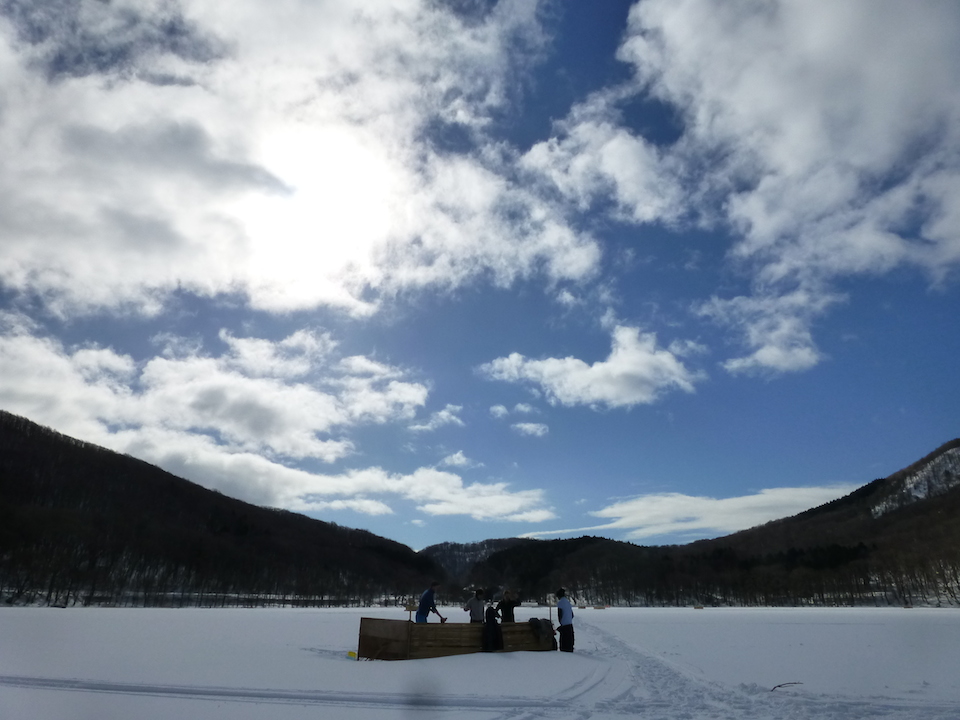
Before any of this could be considered, we arrived at the first empty designated spot more than 800 meters from shore (the lake was packed that day), and, in a group of six, found only four open holes. Using a hand powered ice auger doesn’t look difficult until you start cranking away, and five minutes later find that you have created nothing more than a single centimeter dent. This was the situation I found myself in after insisting on taking over for Senpai Ben, so I quickly handed it back and made myself useful by giving encouraging remarks and watching attentively.

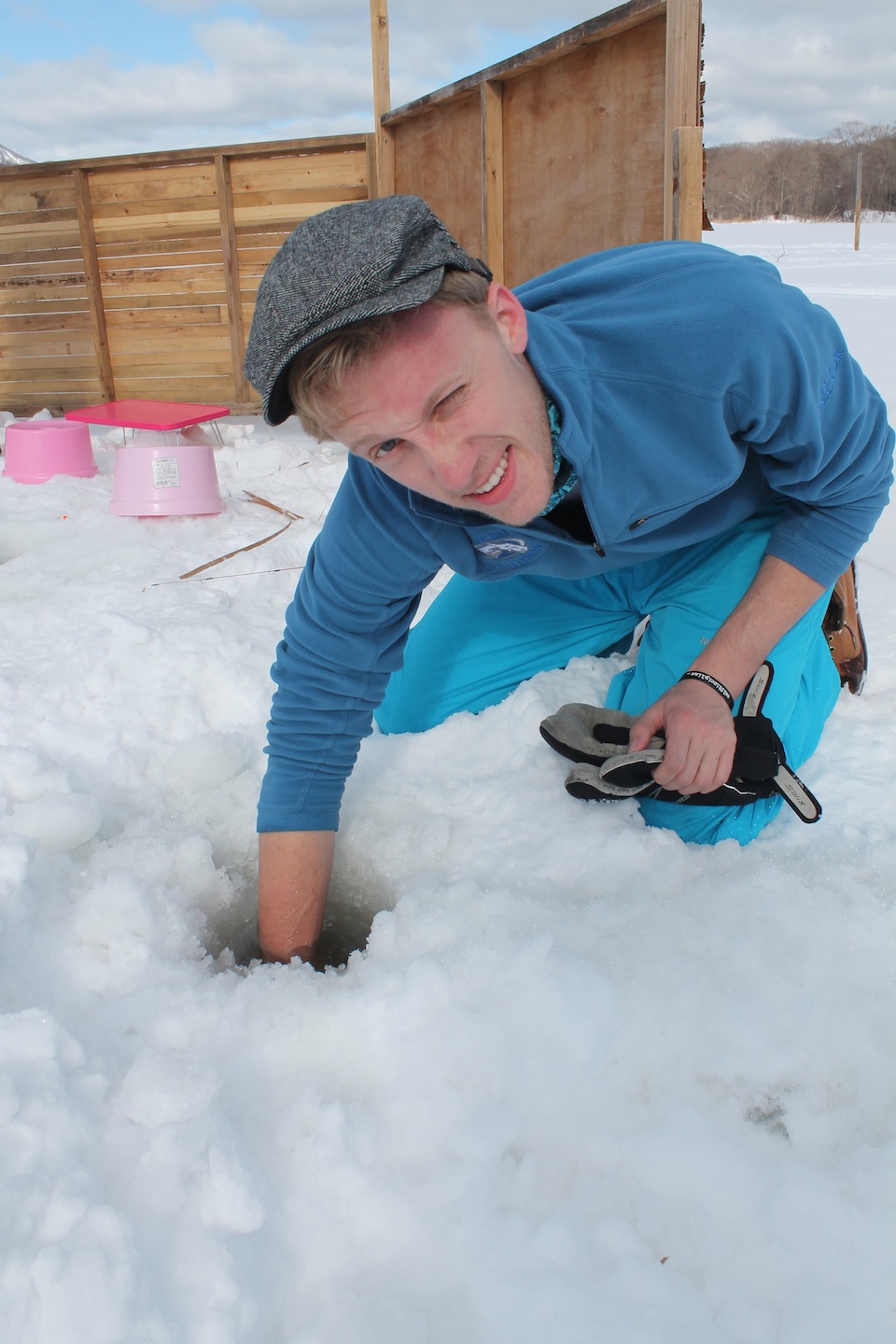
I was thoroughly impressed with my wakasagi teammate Mase-san, who drilled an even faster hole, but as soon as the lines were dropped in, it became clear that my teammate was more adept in the art of drilling than fishing, and at the twenty minute mark I was the individual leader with a dozen fish, but carrying the team on my back, my partner coming in at zero.
The team quickly emerging as a powerhouse was undoubtedly Senpai Ben and Manabe-san, the former of whom tailed me at ten wakasagi, but paired with Manabe’s seven smelt, was establishing a decisive lead.
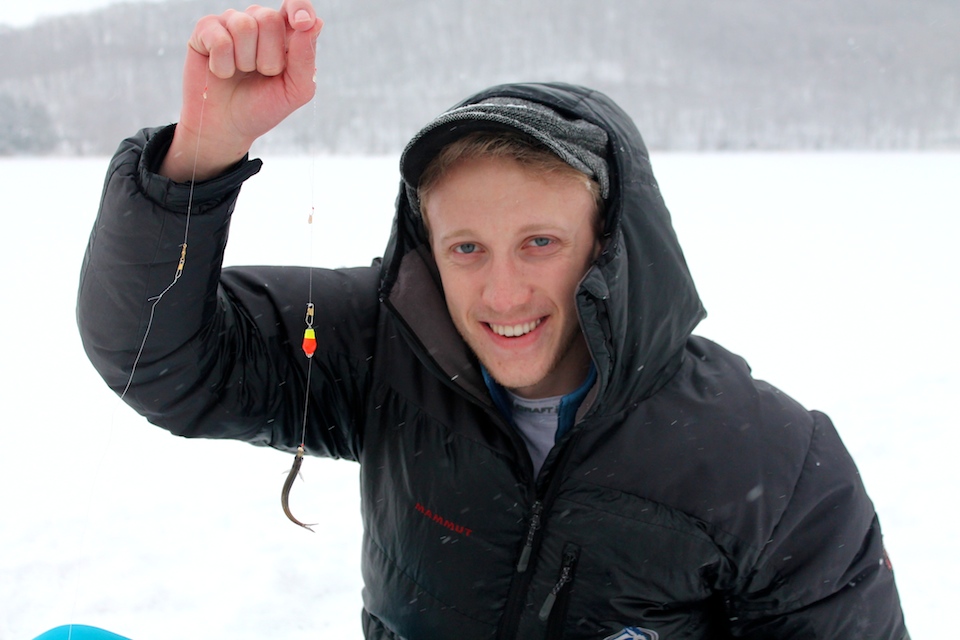

Wakasagi are fast swimmers, and their packs move all over the place, so after one hour my pace was slowing, with twenty total fish, and it was clear that our location was starting to dry up. I looked on in dismay as my teammate continued to hold his pole rather than rest it, likely missing many bites without realizing it. After no action for several minutes on any line, I made the desperate move of drastically increasing my depth from four to nearly ten feet, and this Wakasagi Whisperer quickly collected three unlucky swimmers fin to fin.
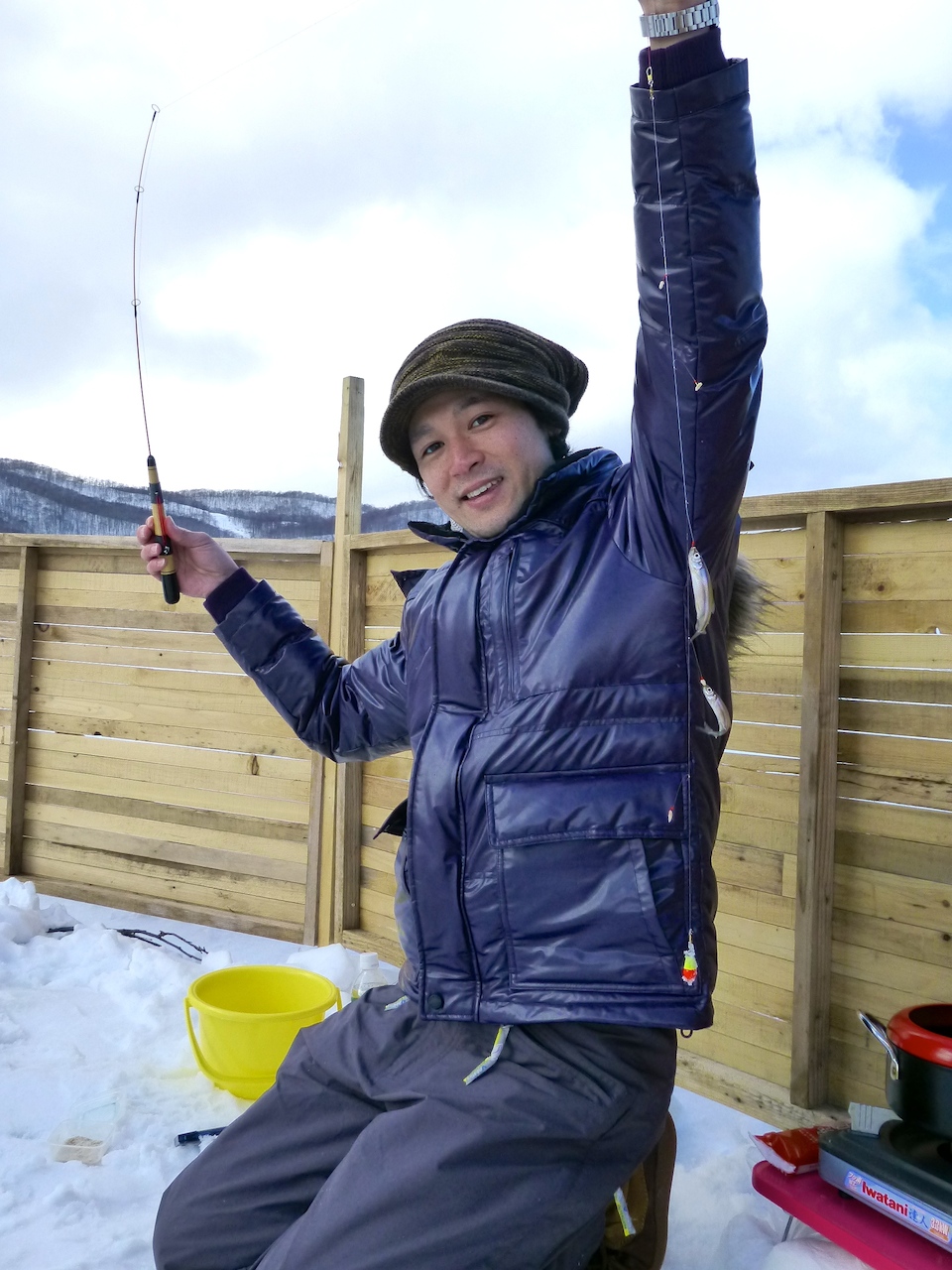
By now it was clear that a location change was needed, and so I crossed the ice with Tezuka and Ben in search of more plentiful feeding grounds. It was here that the two of them quickly caught up to my once unbeatable looking individual lead, and I was surpassed by my own senpai after I made the fatal error of leaving my rod unattended to take pictures of nearby Mt. Komagatake.


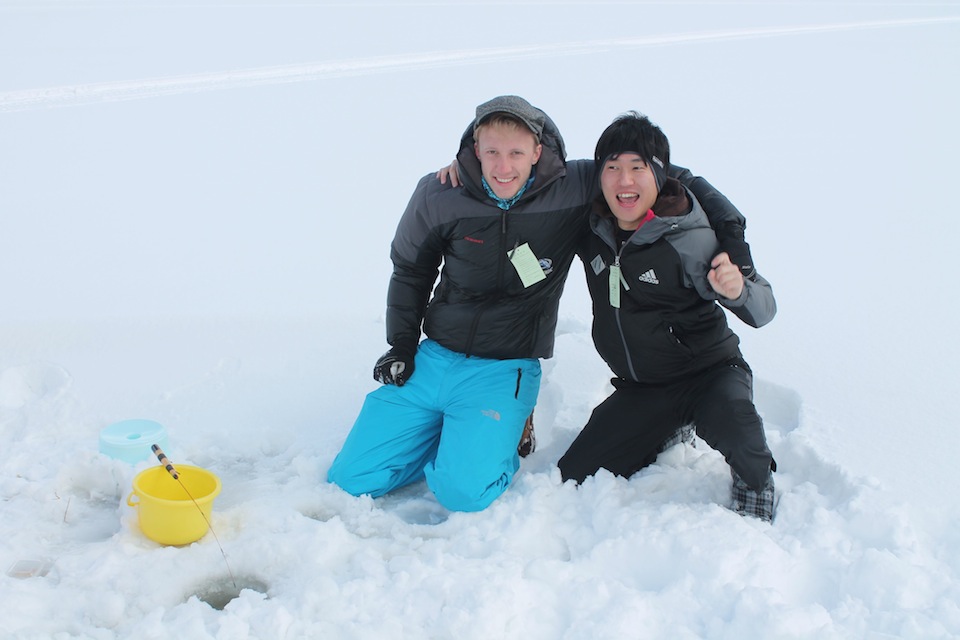
The wakasagi, sensing their whisperer had abandoned them to seek Instagram fame, now gravitated towards Tezuka and Ben. After two and a half solid hours, we returned to the group, where I paired my 39 wakasagi with a mere 8 from my partner, still holding his rod rather than leaving it alone on the ice, and we finished a distant third to Miura/Tezuka’s total in the upper 60s and Ben/Manabe’s 83.
The last step involved oil, breaded wakasagi, and a deep frier. Itadakimasu!
Here’s a video that captures the highlights:
Massachusetts Day in Sapporo
Business trips in a Japan are serious business. First, formal documents must be drawn up well in advance (purpose of trip, itinerary etc.) and passed around from desk to desk receiving a “Hanko” (a kind of personalized stamp used in Japan that acts like a signature) from each person in a long chain of command. Once these details are confirmed, a budget for the trip is determined, and each lucky traveler receives a stipend for his/her travel and accommodation expenses in a special envelope. How these amounts are calculated, I’m not quite sure, but they are exact. More often than not, this means receiving an envelope with a mixture of bills AND coins. If your budget is something like $157.45, that’s what you’ll get, including the 4 dimes and a nickel.
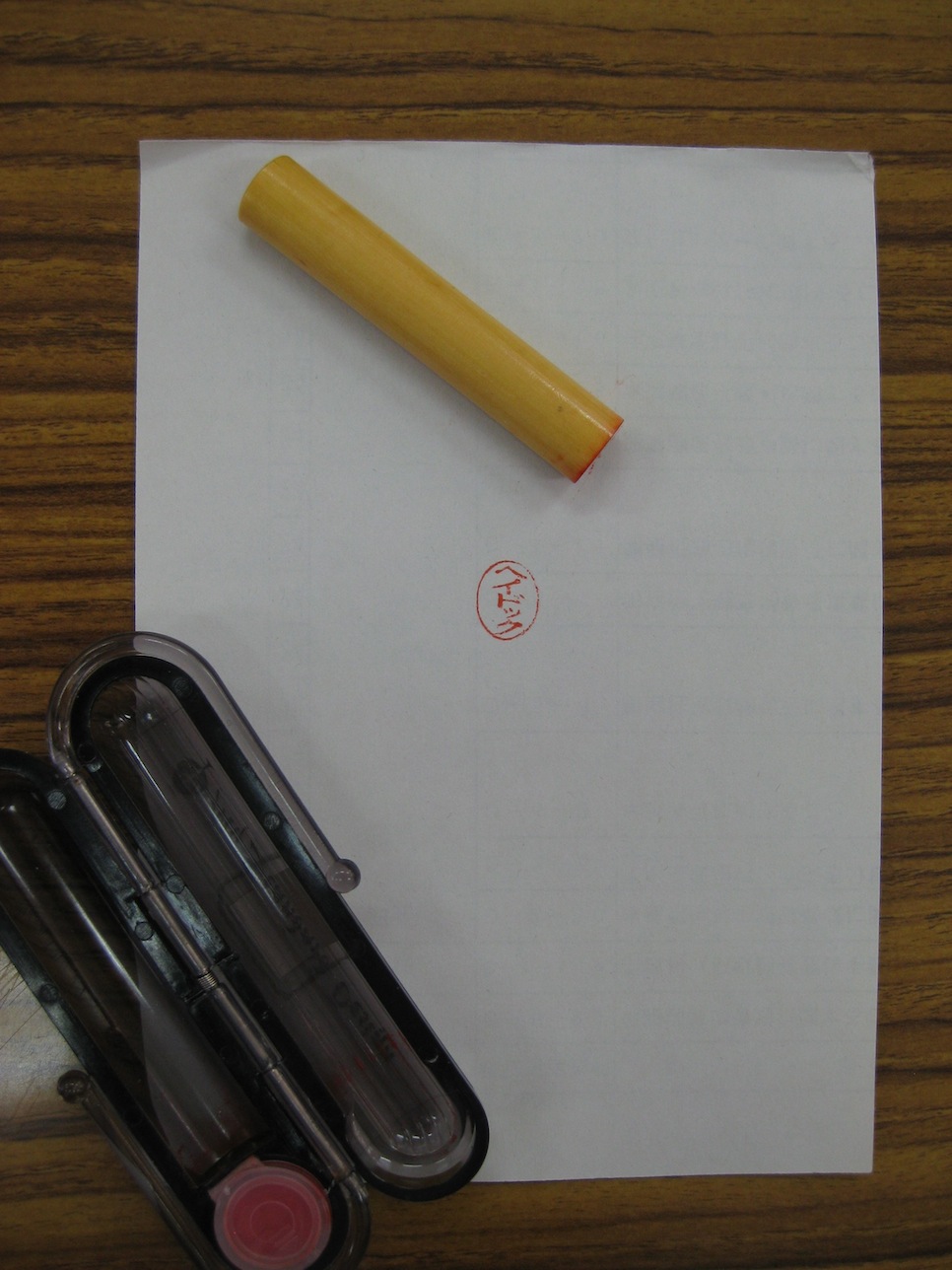
It says: “Haydock” (or “Heidokku” if your Japanese pronunciation is good).
For an ALT or CIR in Japan, these kinds of trips are quite rare, so it’s hard not to feel at least a little excited when the opportunity arises. It was no different in my case when, earlier this month, a small envelop clinked its way onto my desk (yes, there were coins). I was to take a one-night trip up to Sapporo with two of my coworkers, Emi and Teraya-San, to give a special presentation at a “Massachusetts Day” event at the Hokkaido Prefectural Office in Sapporo.
Hokkaido and Massachusetts have been sister states since 1990, and the Massachusetts Day event is held at the Sapporo Prefectural Office to celebrate the date (February 7th) when the two regions entered into this formal relationship.

It reads: “Introductory Exhibition for Massachusetts, U.S.A. ~Massachusetts Day~ (2/6~2/7)
As a lunch-time guest lecturer I was asked to present a little on the history of the connection between Massachusetts and Hokkaido, as well as Concord and Nanae. Having given presentations on my hometown before, I already had a lot of Concord-related material, especially material which highlighted the similarities and differences between Concord and Nanae. I realized, however, that I didn’t know enough about the roots of the Massachusetts and Hokkaido connection, and so I needed to do a bit of research. For this I turned to sources provided to me by Concord’s Tom Curtin, and I visited Nanae’s History Museum a few times to speak with its curator, a man named Mr. Yamada, who knows a whole lot about early Hokkaido/Nanae history.
My research focused on two men from Massachusetts: William Clark and William Wheeler, who played a huge role in the early development of Hokkaido. Clark is famous throughout Hokkaido, and greater Japan, for establishing Sapporo Agricultural College in 1876, which would go on to change its name in 1947 to Hokkaido University and become one of Japan’s top schools. Clark only served as president of the college for about a year before returning to America, but it’s clear that he made a lasting impression. At the moment of his departure, Clark famously turned to his Japanese students and shouted, “boys, be ambitious!” Every Japanese person I have met to date knows this phrase. There is even a shady karaoke bar in downtown Hakodate (the city adjoining Nanae) called “Boys Be Ambitious” (playfully nicknamed “Boys Be”).
Reading about Clark, it becomes clear that he had a very charismatic and impacting personality, which sheds some light on why his memory is still so well preserved here in Japan. Students are quoted as remembering his ethics lectures in which he implored them to “be gentlemen” above all else. He was even able to convince those around him, including the Governor of Hokkaido, Kuroda Kiyotaka, to look aside as he used bibles in the classroom to teach his students Christianity, a religion that was still banned throughout the island at the time. Many of his students would go on to convert. Clark fit the role of mentor and leader perfectly for a region of Japan that was just starting to develop.
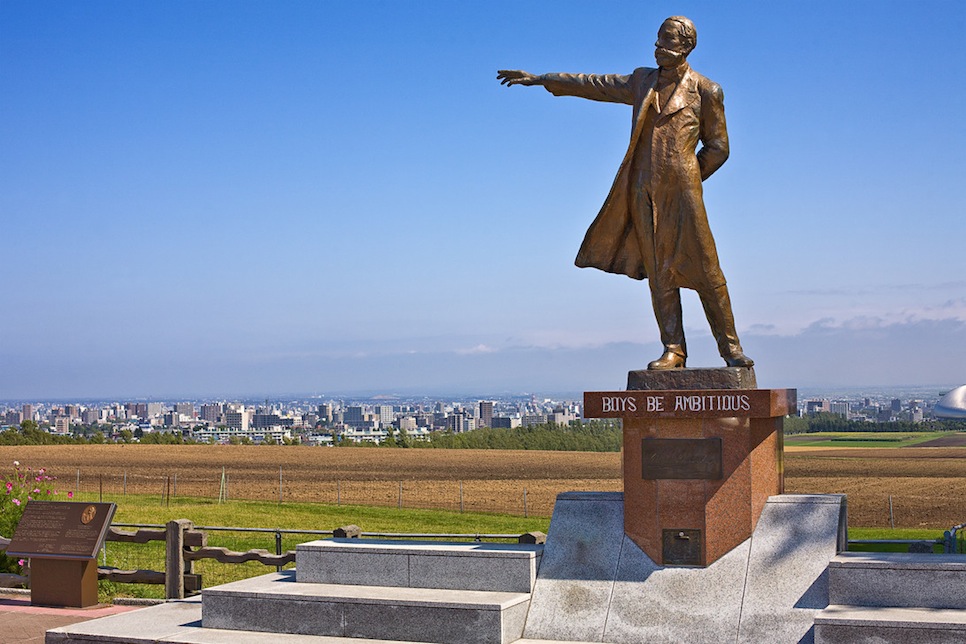
William Wheeler was a born and bred Concordian. He studied under Clark in Massachusetts and came along to Japan in 1876 to help him in establishing Sapporo Agricultural College. Wheeler would go on to become the second president of the school after Clark returned to America. Whereas Clark’s personality and leadership seemed to resonate with his Japanese students, Wheeler’s impact was more concrete. Most famous among his various engineering and architectural contributions to Hokkaido is the main building of the Sapporo Clock Tower, which he originally designed to be a drill hall for students at Sapporo Agricultural College. The Clock Tower remains one of the oldest buildings in the city, and a major tourist attraction.
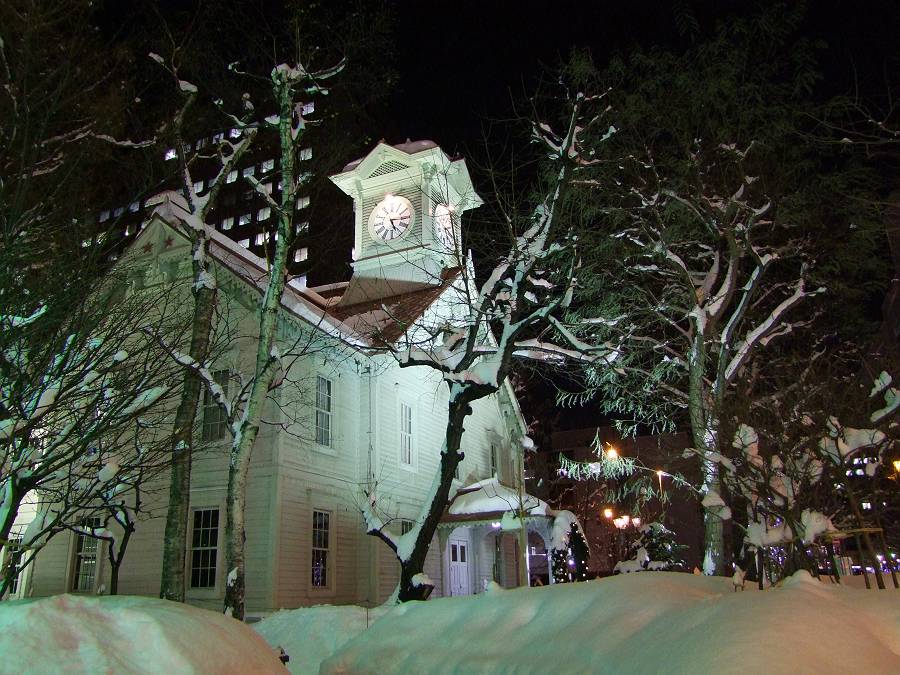
It’s important when reading about these men to remember that these were some of the very first westerners living and working in Japan, not to mention Hokkaido. The Meiji Restoration, which largely signaled the end of Japan’s long period of isolation and began its rise as an industrial power, had occurred not ten years before Clark and Wheeler arrived. Wheeler writes in letters that he and Clark stopped to watch street performances in Tokyo, but that the crowds of people stopping to stare at them soon grew larger than the audience for the performers. I can only imagine what an adventure it must have been for these two guys from Massachusetts to travel by steamship half-way around the world, and arrive in 19th century Japan. Not to mention, when they got there they spent much of their time riding horses around Hokkaido, at that time still essentially a wilderness, surveying roads and railway routes. Badass!
You can view more images and information related to Clark and Wheeler, and the history of the Massachusetts and Hokkaido relationship here: https://concordnanae.org/the-connection/
And now I’ll fill you in a little on the trip:
We drove up to Sapporo from Nanae on a Wednesday morning using one of the Nanae town vans. The drive usually takes around 4 hours using the expressway in good conditions, but we decided to take the local roads to avoid paying the tolls. Hokkaido was being particularly Hokkaido-ish on this day, and with some heavy snow falling throughout most of the drive, it took us the better part of 6 hours. My boss, Teraya-san, was stoic the whole way, assuring Emi and I that we needn’t volunteer to sub in. I knew better than to question his resolve, and reclined my seat in the back to sleep for most of the drive.
As luck would have it, that Wednesday (2/5) was the first day of Sapporo’s annual Snow Festival (Yuki Matsuri). The Snow Festival is massive. It lasts for one week in early February and attracts around 2 million people each year. The main attractions are its giant snow and ice sculptures, which are illuminated at night. In recent years they’ve added a towering “big-air” jump where snowboarders perform tricks during the day. Most of this is set up in Odori Park, which runs the length of a large boulevard in the heart of the city. This made booking a hotel for Wednesday night particularly tough, but Teraya-San had somehow managed to find us one in the city center.
After a quick tour of the presentation space for the next day, and a few meet-and-greets with people at the Prefectural Office we headed back to the hotel, and then out for dinner and drinks at a nearby Izakaya (a type of Japanese eatery where people often sign up for special “all-you-can-drink” deals and order a lot of cheap food, tapas style). In Japan, the ritual of bonding with your coworkers through drinking is central to business culture. Throughout the year, workplaces schedule special banquets (always with “all-you-can-drink” options) at Izakayas, with the idea being that it helps people blow off steam and grow closer with their workmates. Based on this experience, I got the impression that business trips contain a similar component of team-bonding, and I really enjoyed the opportunity to have a fun night out with Emi and Teraya-San.
After dinner, we headed over to check out the snow sculptures in some heavy snow:
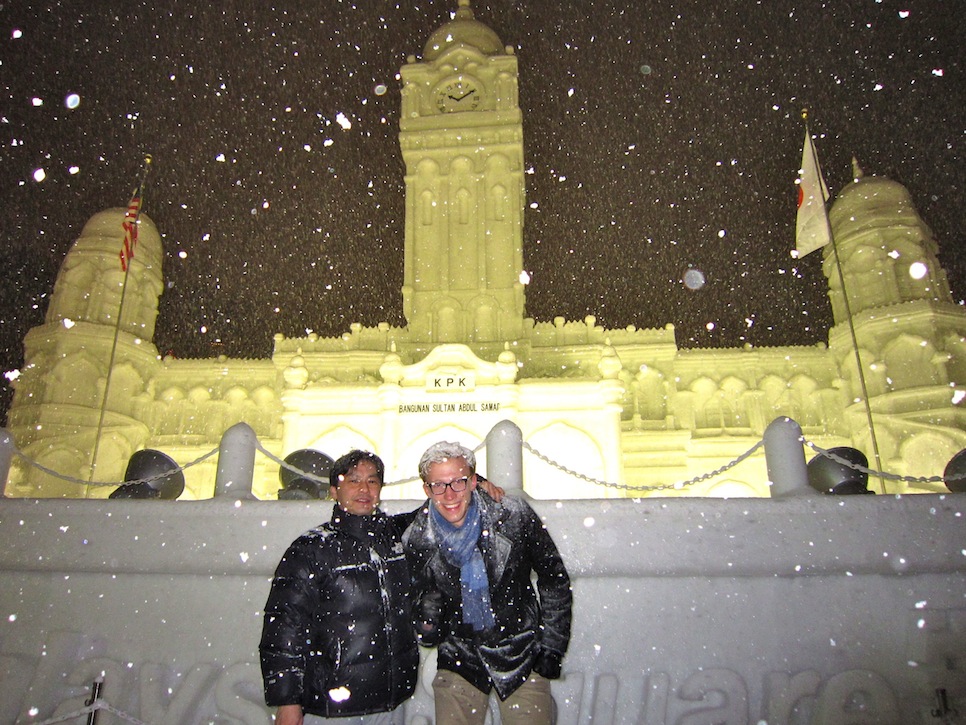
(this sculpture is of the “Sultan Abdul Samad Building” in Malaysia)

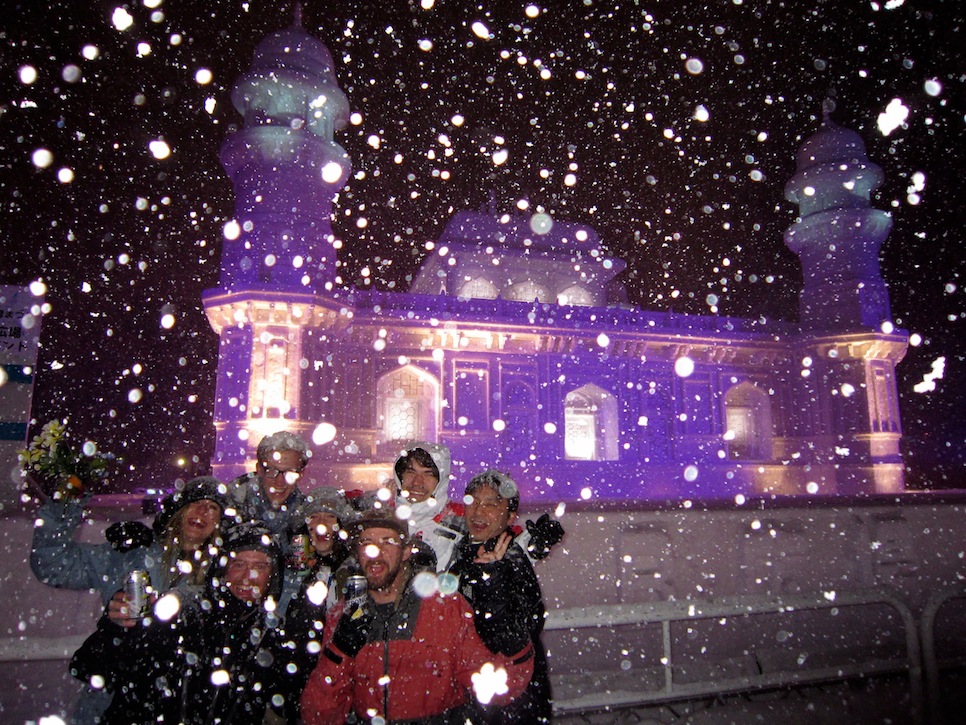
These Australians are enjoying some “chu-hais” (a type of sweet, carbonated alcoholic beverage specially designed in a Japanese lab to ensure head-splitting hangovers).
The next day we got up early and headed over to attend the Massachusetts Day event and to give my presentation.

Teraya-San set up a small booth there to give out samples of Nanae apple juice. Nanae was the first place in Japan to grow apples in 1868, and they remain a major source of pride for the town. Many families in town will “buy” one of the trees at the local orchards for a year, meaning that they get the right to all apples that grow on that tree in that season. They’re that good!

My presentation lasted for about 45 minutes. The lobby where I presented is enclosed in tall glass windows, so the light that filtered through washed out my slides a little bit. That being said, I was happy with how it went. When I present in Japanese, I’m always torn between pronouncing English names and words in the correct English pronunciation, or changing them to match the sounds that exist in Japanese. For example “Concord” becomes “Konkohh-doh” in Japanese. I usually end up doing a mix of both.

(showing the size difference between Concord and Nanae)
Below I’ve uploaded a short clip from my presentation, where I talk about the “Concord Grape”:
On our way back to the car we bumped into this little guy in front of the former Governmental Office of Sapporo. Cute (“Kawaii”) characters are extremely popular in Japan.

This mascot’s costume seemed really restrictive.
After another long drive we arrived safely back in Nanae. Mission Accomplished.
Until next time!
Ben
New Website Format
Hi!
Welcome to the newly formatted “ConcordNanae.com”. If you’ve visited this site before, you’ve probably noticed it looks quite a bit different lately! By changing the site’s appearance I am hoping to provide a more visual experience for readers. Friends back home often ask me, “what’s Japan/Hokkaido/Nanae like?” and conversely, I often find Japanese people asking me, “what kind of place is Concord?” Rather than simply tell you about it, it’s much more effective if I show you, and with that in mind I’m hoping to incorporate a lot of useful media elements into the blog section and information pages of this site. This starts with the photo slider on the main page, which I hope to use as a way to advertise new content relating to everything Concord-Nanae! Please check back often, as new pictures and links will be appearing frequently on the main page.
Additionally, you’ll notice that blog posts now feature the author’s picture on the left hand side. https://concordnanae.org/new-website-format/ Now that there are two Concordians working in Nanae, its my hope that this site can become a true “multi-author blog”. David McLean Shoup, the new Nanae ALT, is an experienced writer and blogger, so look out for his picture popping up on some new posts soon! Between the two of us, we’re hoping to feature new blog content every week!
Cheers!
Ben
Video Exchange #5 (CCHS to Nanae )
This video was taken in January by the C.C.H.S. Science Fiction Club as part of their ongoing exchange with the Nanae High School English Club.
Nanae’s 2013 Fall Concord Delegation
On Tuesday, December 18th at the Nanae Culture Center, we held our final debriefing session for the 2013 autumn delegation trip to Concord. Family, friends, school principals and teachers all came to listen to this year’s delegation members talk about their experience in Concord.

(PHOTO BY EMI KIMURA)
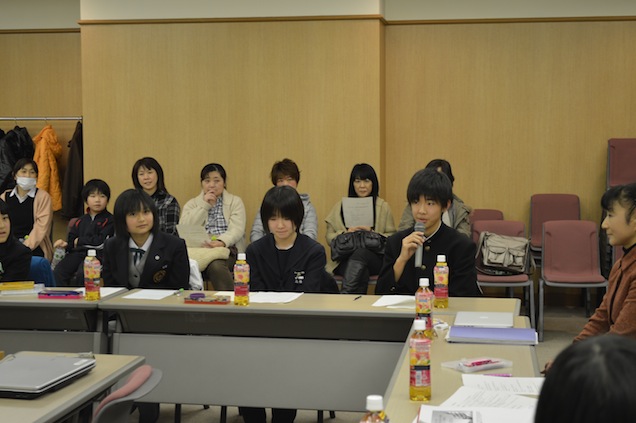
This year’s delegation trip (including travel time) spanned from October 1st – 11th. The group was composed of 3 high school students, 5 middle school students and 6 adults. We spent our first 6 days in Concord, where each member stayed with a host family. After a day of sightseeing in Boston, and a night in a hotel, we boarded our return flight from Boston to Tokyo.
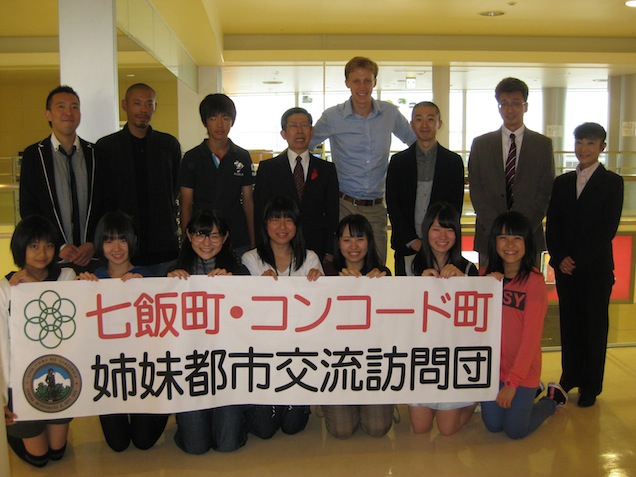
Below I’d like to share a recap, as well as some of my own thoughts on this year’s delegation:
When the day came to depart on this year’s delegation trip to Concord, I was feeling a little nervous. Unlike past delegations, our group had very few members who spoke English or had ever traveled to America, so I had been told I would be relied on as both a guide and translator. However, Continue reading “Nanae’s 2013 Fall Concord Delegation”


